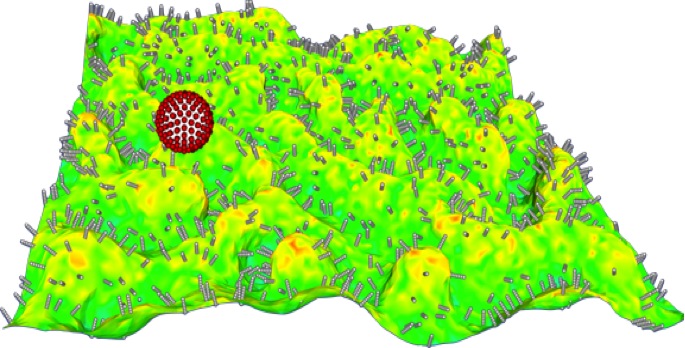Optimizing Microcarrier Design for Targeted Drug Delivery
We are particularly interested in the dynamics of (functionalized) nano-particle adhesion to cell surface receptors and the interplay of hydrodynamic interactions. This is particularly important in vascular delivery of antibody-functionalized nano-particles (50 nm-1 um in size) to selectively bind targeted surface receptors expressed by endothelial cells and is a viable therapeutic strategy. Optimal nano-particle delivery involves the appropriate selection of their size, shape, and antibody density on their surface. Additionally the choice of appropriate tethers/linkers bridging the antibodies to the nano-particle surface depends on the physiological microenvironment, including hemodynamics and rheological properties of blood flow in the microvasculature as well as the state of the endothelial cells (which governs expression of targeted receptors such as the intracellular adhesion molecule-1, ICAM-1). We couple in vitro and in vivo experimentation with a computational model-based optimization of targeted drug nano-particle design to optimize targeting selectivity and specificity (there-in predicating rational design of nano-particle for clinical use). We address the important aspects of nano-particle adhesion dynamics with respect to their impact on binding selectivity and specificity. We employ techniques ranging from direct numerical simulations for fluctuating hydrodynamics, Brownian dynamics, and generalized Langevin dynamics. We also perform molecular dynamics (MD) simulations of target cell membrane undulations as well as receptor diffusion within the membrane to understand the contribution of membrane structure and receptor mechanics to binding. These efforts are leading us to the development of a next-gen pharmacodynamic modeling system for targeted drug delivery.

